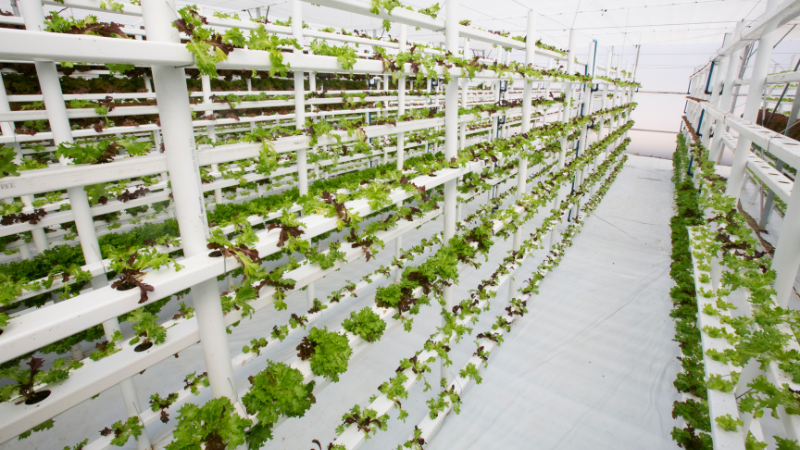Vertical Farming

The world's population is growing at a rapid rate, according to Our World In Data, in the 20th century, the world population increased from 1.5 billion to 6.1 billion. This emphasises the demands that this will place on farming and adequate land for sustainable growth.
Scientists say that the Earth has lost a third of its arable lands over the last 40 years. The lack of arable land coupled with substantial increases in the world's population poses quite a challenge. On the upside, the solution to this challenge lies in vertical farming.
What is Vertical Farming?
Vertical farming is the practice of producing food on vertically inclined surfaces and can be done indoors. Vertical farming replaces traditional farming on a single level, such as in a field or a greenhouse, and produces foods in vertically stacked layers commonly integrated into other structures like a skyscraper, shipping container or repurposed warehouse. This modern idea also uses indoor farming techniques!
It is due to the artificial control of temperature, light, humidity, and gases, in an indoor space, that the production of both food and medicines are possible. In many ways, vertical farming is similar to greenhouses where metal reflectors and artificial lighting augment natural sunlight. The primary goal of vertical farming is to maximize crop outputs per square meter; using minimal space.
How does vertical farming work?
There are four critical areas in understanding how vertical farming works:
-
Physical layout
-
Lighting
-
Growing medium
-
Sustainability features
To accomplish this goal, crops are cultivated in stacked layers in a structure similar to a tower. A perfect combination of natural and artificial lights are used to maintain the perfect light level in the room. Technologies such as rotating beds are used to improve lighting efficiency.
In most cases, soil isn't used in vertical farming. Instead of soil, aeroponic, aquaponic or hydroponic growing mediums are used. Peat moss or coconut husks and similar non-soil mediums are very common in vertical farming. Finally, the vertical farming method uses various sustainability features to offset the energy cost of farming. In fact, vertical farming uses 95% less water.
The artificial lighting used in vertical farming is usually LED lighting systems such as our Fluence range. These lights enable the vertical farmer to have complete control over the lighting. LED lights are also less hot and are more cost-effective in the long run.
Benefits of vertical farming
Vertical farming can be divided into two broad categories: green walls or living walls. Both of these are used either for decorative purposes or as vertical food crops in production systems, known as plant factories.
Plant factories are usually indoor operations located inside buildings or greenhouses. They are used to grow food crops and can be utilised in conjunction with:
-
Hydroponics: plants are grown in a soilless, nutrient-enriched water solution
-
Aquaponics: a system that combines conventional aquaculture with hydroponics
-
Aeroponics: crops are grown in an air or mist environment without soil
-
Soil: in limited instances
The main advantages of vertical farming are:
-
It offers a plan to handle future food demands
-
It allows crops to grow year-round
-
It uses significantly less water
-
Weather doesn't affect the crops
-
More organic crops can be grown (increased production rates)
-
There is less exposure to chemicals and disease
-
Increases profitability
-
Reduces carbon footprint
-
Requires less physical space
Vertical farming is, however, not without its challenges. These include the cost of infrastructure, ensuring reliable electricity supply and knowledge and skills.
If vertical farming is something you're interested in or if you're looking for better indoor grow lights, our Horticulture division has the solution for you.
Contact us to chat about the best options for you and your vertical farm.